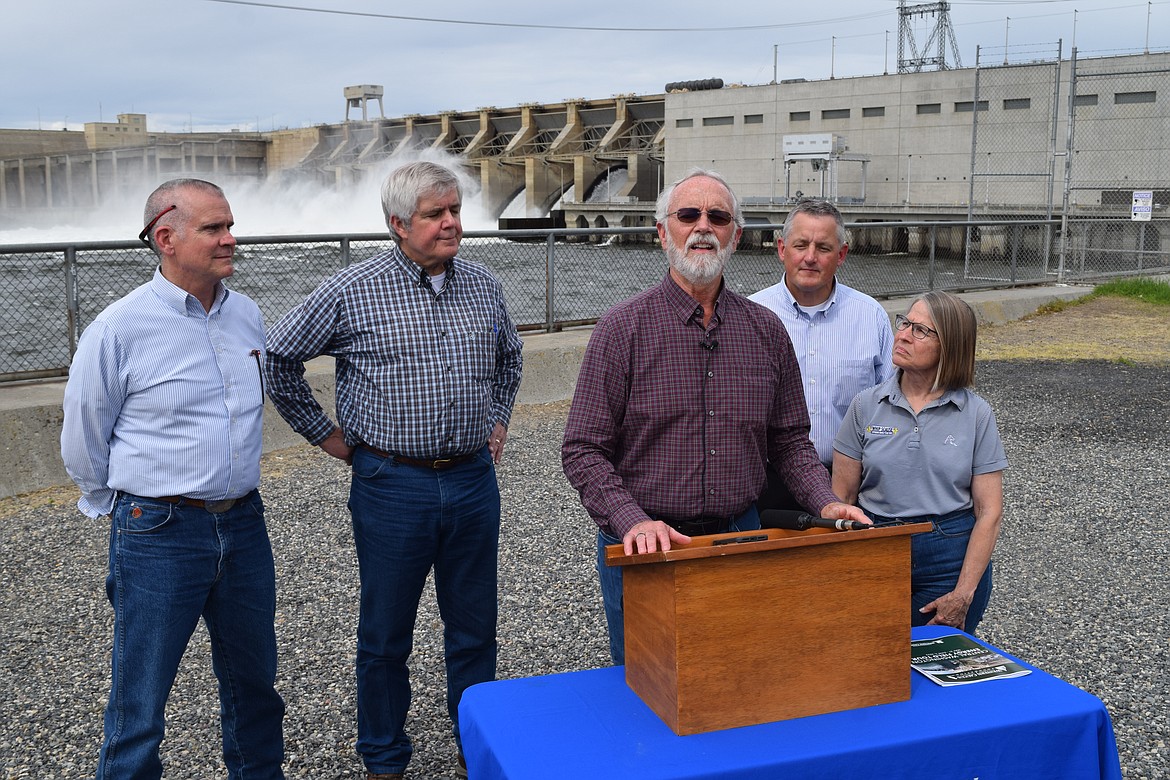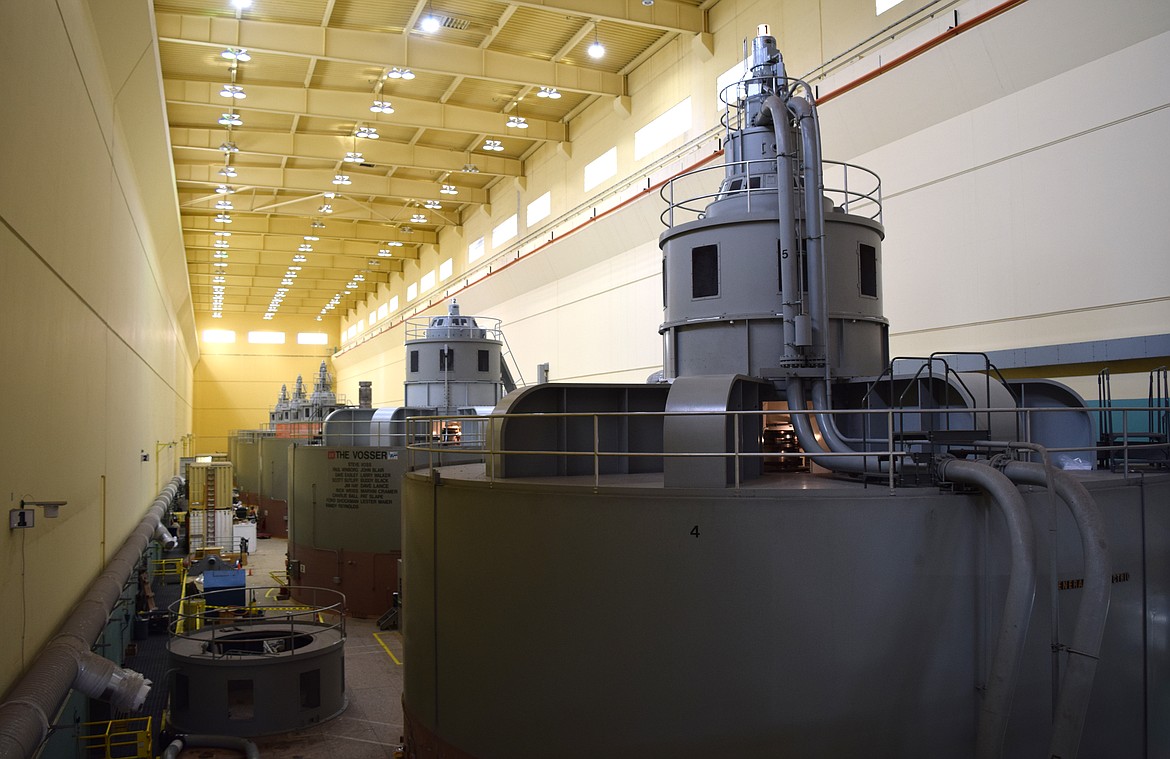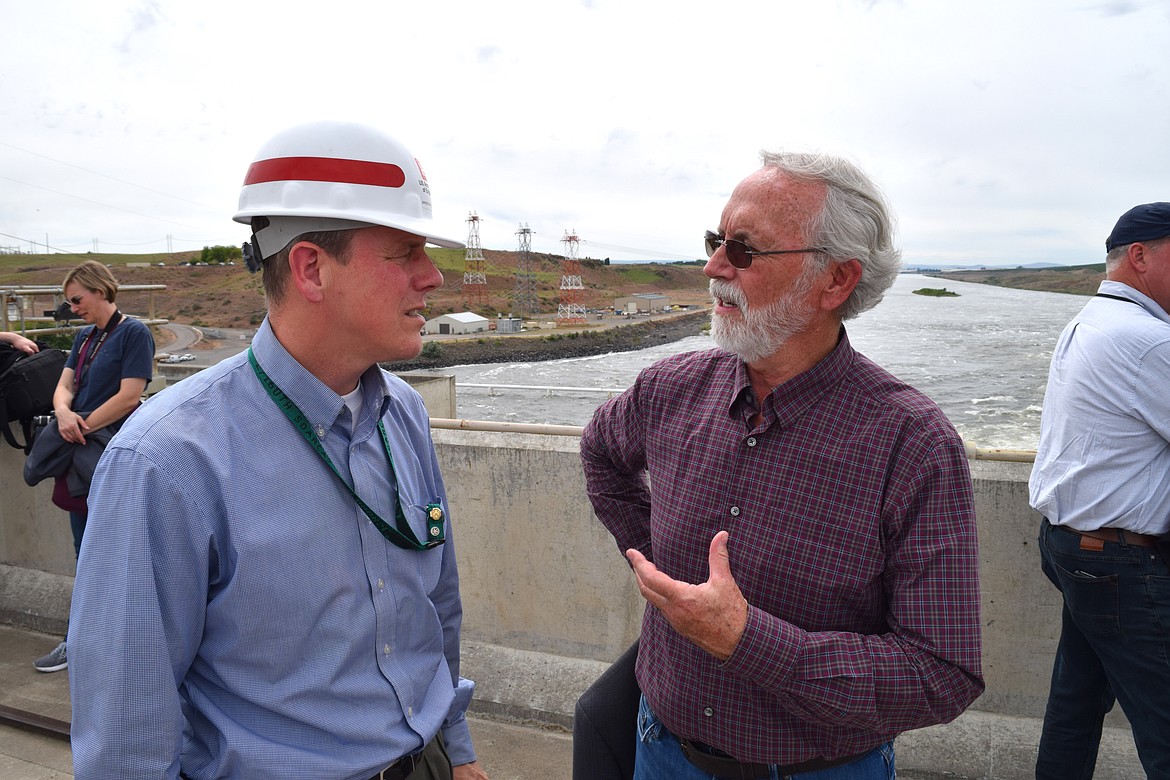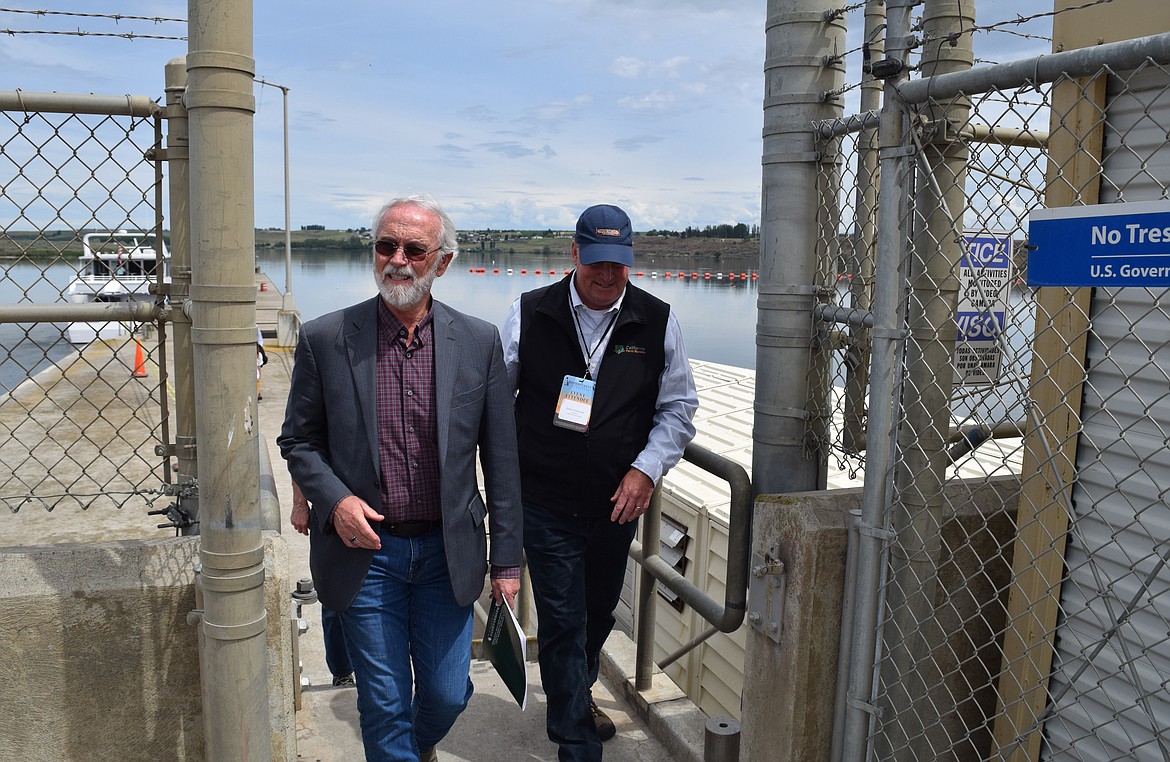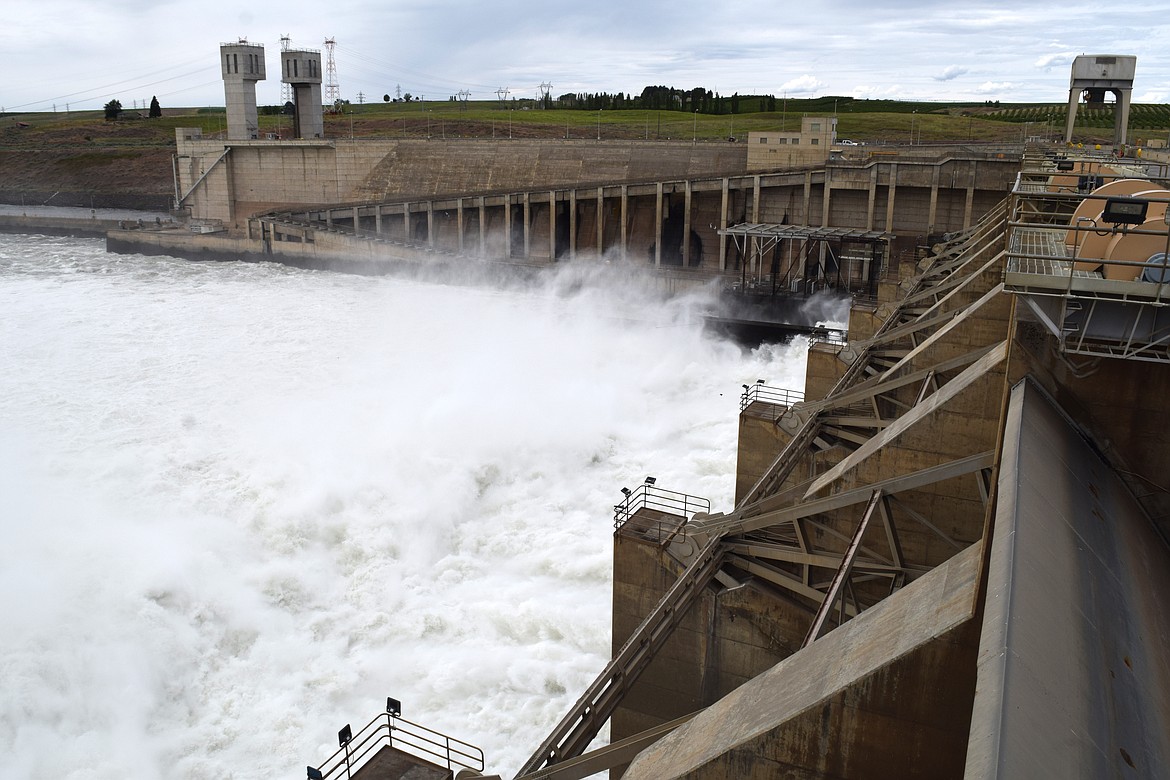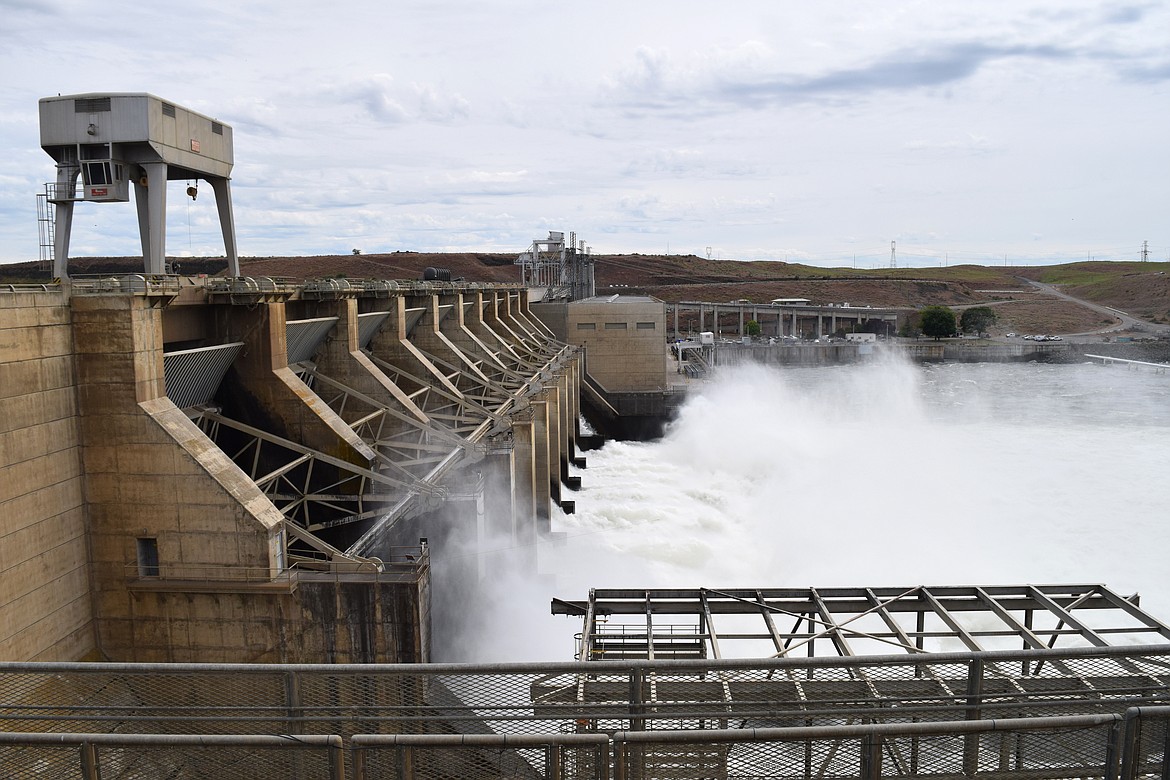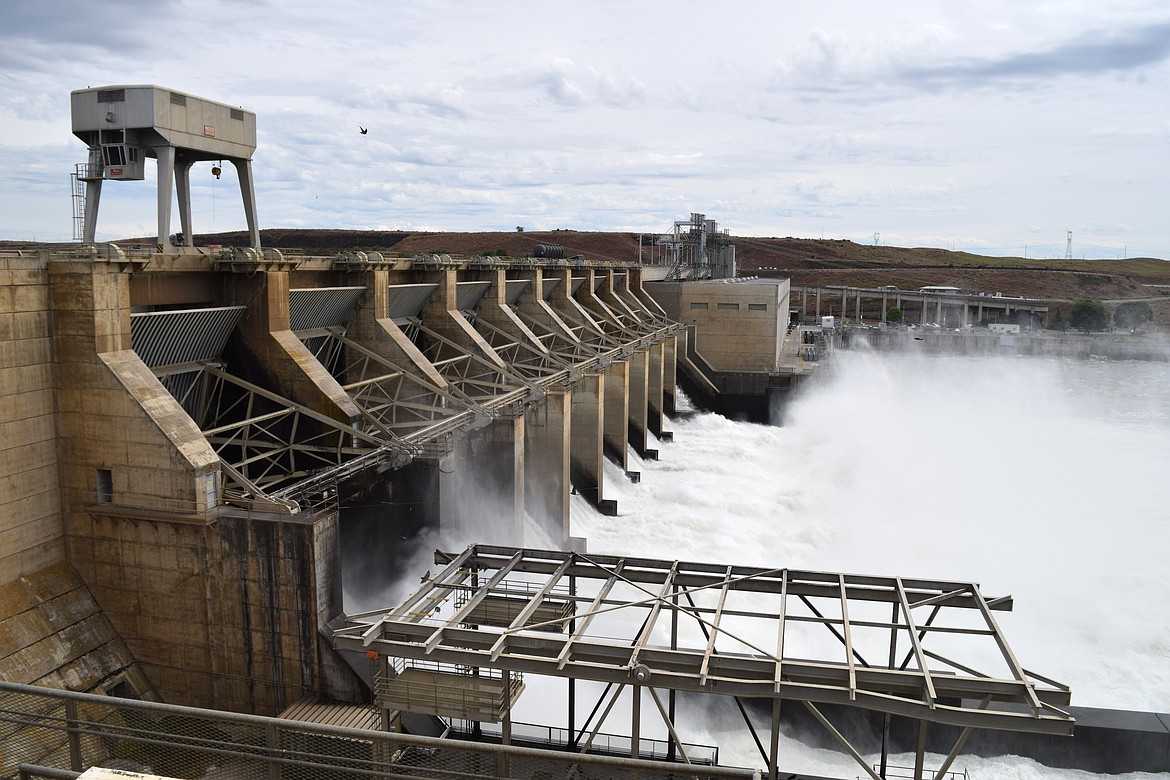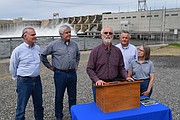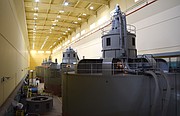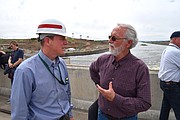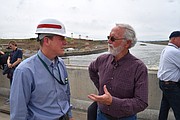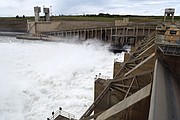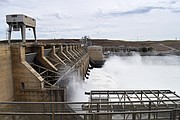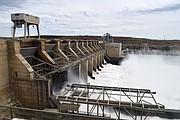Newhouse hosts congressional dam tour
BURBANK, Wash. — There aren’t many hydroelectric dams in Iowa.
So Rep. Marinnette Miller-Meeks, R-Iowa, said she’s glad she got an opportunity on Wednesday to visit the Ice Harbor Dam and see firsthand how important hydropower is to the Western United States.
“As members of Congress, we’re going to be voting on legislation that can affect this area,” Miller-Meeks said at a short press conference following a tour of the dam and the associated six-generator power house. “And when you see it firsthand, you can make a more informed vote.”
Miller-Meeks was joined by fellow members of the Congressional Western Caucus Bruce Westerman, R-Ark., Cliff Bentz, R-Ore., Matt Rosendale, R-Mont., and caucus chairman Dan Newhouse, R-Washington/Yakima, who wanted to show other members of the caucus the importance of hydroelectric power, particularly the four lower Snake River dams, to Washington, the Pacific Northwest and the entire United States.
Newhouse organized a boat trip from Richland to Ice Harbor to give both the visiting members of Congress as well as leaders in industry and agriculture from across the West a chance to see up close just how the dam works — and what’s at stake for Washington.
“The dams are under attack, and a lot of people would like to see the dams go,” Newhouse said. “That’s a Congressional decision that has to be made at the federal level.”
Environmental groups, Pacific fishermen and Native American tribes have been facing off with the federal government in court over the last 30 years to breach the four lower Snake River dams — Ice Harbor, Lower Monumental, Little Goose and Lower Granite. All of those dams were built by the Army Corps of Engineers in the 1960s and 1970s to improve the runs of salmon on the river, which have declined 90% since the dams were built.
However, at stake are not only fish, but significant hydroelectric power generation in a nation where demand for electricity is rapidly rising, as well as irrigation water for farmers in Walla Walla County. There’s also the ability to move millions of tons of grain every year by barge down the Snake River from Lewiston to Portland, and the precedent many fear successful breaches may set for other Pacific Northwest dams — including those along the Columbia River.
“We do really care about salmon, but I don’t think this issue is about salmon,” said Kurt Miller, executive director of Northwest River Partners, a group that advocates for Pacific Northwest power generators to keep the dams untouched. “It’s ideological; it’s about a worldview.”
Mike Simpson, R-Idaho, has introduced a bill that will breach the four lower Snake River dams, if passed into law. Simpson estimates the cost of doing so at $33.5 billion, but said wild chinook and sockeye salmon runs along the Snake River portion of the Columbia River system — which includes the Columbia River in Washington, the Snake River in Washington and Idaho, and the John Day River in Oregon — are so low the salmon face eventual extinction in their Idaho mountain stream and river habitats.
At the four dams, the Army Corps of Engineers has created complexes of fish ladders to help salmon find their way upstream, have installed a number of other changes to the dams to make it easier for more fish to pass through, and as a final safeguard has engineered a new type of generator turbine blade that will make it easier for those fish that don’t bypass the generators to make it through intact.
“It’s amazing how almost 100% of these fish make their way through these dams,” Westerman said, echoing figures from the Army Corps of Engineers. “If you listened to the environmental interests, you’d think it was just the opposite, but 98% of the fish make it through those dams.”
Rick Dunn, general manager of the Benton County Public Utility District, said hydroelectric power is foundational to electricity provision in the Pacific Northwest. He added that, with the region’s growth, there simply is no surplus power in the region. That’s especially true as demand for low and no-carbon power is forcing power producers to stop burning coal and natural gas to generate electricity.
“We need to keep all the hydro that we have. We’re getting less and less self-sufficient in the West,” Dunn said, noting the four lower Snake River dams combined are capable of producing around 1,000 megawatts of electricity. “We cannot afford to see it go away at all.”
Newhouse said members of the 75-strong Western Caucus frequently visit each other’s districts in order to get a better sense of the issues common to all rural Americans no matter where they live.
“We talk about agriculture, minerals, oil and gas, federal lands, things that impact rural communities,” he said. “It helps members of Congress make intelligent and informed decisions on issues that impact the entire nation.”
Charles H. Featherstone can be reached at cfeatherstone@columbiabasinherald.com.




